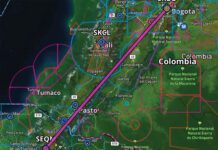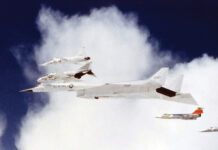After learning to fly, many pilots want to use their new skills to go places. Whether they rent or own an aircraft, and whether it’s a high-performance or a simple fixed-gear single, many pilots want to use their machines for on-demand transportation. It’s a natural desire for a freshly minted private pilot, and for a long time was general aviation’s bread and butter.

This urge to get the most utility out of general aviation aircraft is important to not only existing pilots but also non-pilots who have little interest in flying other than the possibility of escaping a deteriorating, uncomfortable and degrading airline system. Combining utility with reliable, safe transportation might help draw more participants into general aviation. The key to obtaining this utility is to recognize the special risks associated with flying maximum range missions.
Why Max-Range Elevates Risk
A key measure of any general aviation airplane’s transportation efficiency is the block speed it delivers when compared to the alternatives of automobile or airline travel. Block speed means the door-to-door average speed from your house or office to the final destination. They usually are substantially less than the true airspeed of your GA airplane or your airline competition and could approach—or be less than—automobile block speeds.
Even a Cessna 172 can deliver block speeds exceeding airline travel if you live close to a GA airport and the airline hub is hours away by road. This is becoming more the norm as airlines drop service to smaller cities. Naturally, if you fly a high-performance single like a Cirrus, Bonanza, Mooney or Cessna 210, your block speed will be higher.
While true airspeed is an important component of block speed, an airplane’s unrefueled range also can be critical. Fewer stops for fuel can substantially increase block speed. So the true measure of range capability must consider the amount of fuel carried and the efficiency of the engine, as well as true airspeed. My all-time favorite aircraft that is a paragon of this efficiency standard is the Mooney 201, or M20J. As described in the sidebar on page 6, I made several long-distance and/or -duration flights in my Mooney that illustrate the risk management challenges you can face on such flights.
Performing fewer takeoffs and landings to cover a given time or distance also helps minimize the risk those operations pose, especially at unfamiliar locations. Whenever you are considering making a long-distance flight, you should remember that the full range of hazards and risks could be in play.
Pilot-Related Risks
Pilot-related risks generally fall into two buckets—those concerned with qualification/currency/proficiency issues and those related to health/physiological and associated aeromedical issues. With regard to long-duration or -range flights, it’s usually the latter category generating the most risk. As I described in the sidebar on page 6, we all have physiological limits that may reveal themselves on such flights. Even more important, we may suffer cognitive deficiencies even though there are no immediately discernible effects, such as the headache I described in the sidebar.
A key parameter for determining your physiological fitness at high altitude is your blood oxygen saturation. Typically, this number should be above 95 percent at an individual’s “home” altitude, but everyone’s physiology is different. My personal opinion is the magic number for your minimum blood oxygen saturation—when you are operating at altitude without supplemental oxygen—is 91 percent. Your blood oxygen saturation can be easily measured with a relatively inexpensive pulse oximeter. This should be standard equipment in your flight bag if you operate above 10,000 feet regularly.
Even if you carry and use supplemental oxygen on long-range flights above 10,000 feet, there are other physiological risks to consider and mitigate. You will still suffer fatigue on long flights, even when using supplemental oxygen. You may also become severely dehydrated. Both of these conditions could affect your cognitive abilities, as well as being potentially dangerous in other medical aspects. It’s important to find a way to move around a lot in flight, a sometimes challenging proposition in a Mooney. You should also consume some water while on long flights. I try to sip some every hour and then finish the water bottle in the last half hour of the flight. Everybody’s bladder is different, but you should find a level of water intake that you can tolerate and make an effort to stay hydrated.
It’s all about fuel
Aircraft-related risks include the functioning of equipment and its maintenance status. However, the status of your fuel reserves on any long-range flight will be the primary potential aircraft-related hazard and risk. That’s because the aircraft’s radius of action decreases continuously as fuel is consumed. On a long-range flight, you may plan arriving at your destination with minimum fuel reserves. One key is ensuring these minimum reserves are able to cover weather and other contingencies.
I always plan to arrive with a minimum of one hour in the tanks, or 1.5-2.0 hours if I’m not certain about fuel availability at my destination. When I’m flying in IMC, I’ll also ensure added fuel for the alternate. You may wonder why I’m not advocating making a fuel stop in the middle of the route, if for no other reason than to reduce “fuel anxiety.” This may be the prudent solution in some cases, especially when faced with multiple environmental hazards as you approach your destination. This could include poor weather, terrain issues or inoperative approach aids. These hazards and potential risks must be balanced against your natural desire to avoid a decrease in block speed caused by the fuel stop that will invariably take a least an hour. I’ll always err on the side of caution when required by circumstances.
Although aircraft-related risk is all about fuel, sometimes it isn’t. For me, the biggest equipment issue is the autopilot’s status. If it’s inoperative, that’s always a red flag for me on any long-range, long-endurance flight, especially when IMC conditions prevail. If your airplane doesn’t have an autopilot, you should rethink the advisability of making long-endurance flights, since your fatigue issues will be compounded by the higher workload. I’ve flown the Mooney and the two Bonanzas I owned with inoperative autopilots and I can attest to the higher workload of maintaining control of aircraft that are not particularly stable for hours on end.
Environmental Risks
Some of the biggest risk management challenges we face on any cross-country flight relate to environmental issues such as weather, terrain, and airport/ATC issues. These are often magnified on long-distance flights.
As usual, our biggest nemesis is weather. On typical flights in GA aircraft of 3-4 hours, we will usually encounter some type of weather-related risk, such as convective activity, icing, turbulence, low ceilings/visibility or high winds. On a long distance/duration flight of 5-6 hours that can cover 1000 nm or more, you are likely to be subject to numerous weather hazards and risks. For example, on the 1000-nm flights I’ve made, I routinely encountered three different weather systems. I also often was subject to regional weather situations that generated potential hazards and risks.
In my own experience, I would typically encounter multiple environmental risks on long-distance flights. For example, on the many flights I made from Oklahoma City to Washington, D.C., I often faced four challenges: An early morning departure in CAVU conditions would quickly encounter building convective activity in the Midwest, turbulence at a frontal boundary, icing over the Appalachians, and low ceilings in the D.C. area as a coastal low pushed moisture up against the mountains.
Going westbound from Oklahoma City, it could be a CAVU departure, followed by increasing turbulence as the day heated up (pushing me up above 10,000 feet), followed by orographic convective activity with mountain obscuration in the Rockies, and coastal fog on the California coast. This route also presents numerous terrain challenges and the need for high-density altitude takeoffs if I made a fuel stop.
Regardless of the hazards and risks outlined above, the environmental hazards and risks must be mitigated; I often departed early (sometimes a day early), and made large dogleg route deviations to totally avoid convective activity and mountain obscuration. A route deviation made early enough seldom adds many miles to the trip, although it may result in the fuel stop you were hoping to avoid. For more on fuel stops, see the sidebar above.
External Pressures
The fourth category of risk is always the trickiest. External pressures can be insidious, and if you’re trying to make a long-range nonstop flight with a meeting at the other end 15 minutes after your scheduled landing, then you should reconsider your plan. Even if you’re on schedule after six hours of flying, you’re likely to be at least slightly fatigued and won’t really be effective in any meeting.
Your ability to mitigate these kinds of risks sometimes depends on the schedule you are trying to create. In my case, I often made multistop trips to many locations for multiple meetings. I often would finish a meeting on Friday and have an important meeting in another city 1000 nm or further down the road on Monday morning. In that case, I would make the long-range haul on Saturday rather than Sunday to build in a rest day and have a backup plan if the weather wasn’t flyable on Saturday. This is only an example of many techniques that I used, and I rarely had to cancel or reschedule meetings. Of course, I also arranged a backup plan with the client so the meeting could take place later Monday or even on Tuesday.
Your ability to mitigate external pressures will depend on your unique circumstances. One external pressure you should always avoid is usually self-created. That’s the temptation to make a long-distance flight nonstop for its own sake, regardless of the level of risk. You’re not out to set any record, so don’t push yourself into the “yellow” and “red” risk zones when a fuel stop is the prudent thing to do.
Some New Procedures?
If you have the need or desire to make long-range flights nonstop, you should always have clear limits or personal minimums to help you manage the risks. Remember that long flights, especially those that exceed 1000 nm, almost always will bring to the surface risks you may never have considered or were sufficiently minimal in nature they didn’t require mitigation. Here are some procedures to consider.
Respect your physiological limits. This is especially true regarding supplemental oxygen. Plan your mitigations early. This includes adequate rest the night before your flight and adequate hydration during it.
Remember, too, that most long-range flights will push the aircraft’s fuel capabilities. Your planning should always provide a minimum of an hour’s cruise fuel remaining when you land. More is always better, especially if weather is a consideration.
If you’re not making your planned ground speed, land early to refuel. Don’t try to stretch it. If you don’t have an autopilot or if the one you have is inoperative, think twice before launching on a five- or six-hour hour flight. In this case, it’s also better to land midway and refuel and recharge.
You are likely to encounter multiple environmental hazards on your long-range flight, including multiple weather systems. Begin planning your mitigations the day before the flight, or earlier. Don’t shy away from making large route deviations to avoid the worst hazards and risks. It won’t add that many miles or much time.
Create plenty of slack in your schedule to deal with external pressures. If necessary, leave a day early. Make sure your clients, business associates and/or family are aware your schedule and arrival time is flexible. Above all, remember that you don’t have to make any flight an endurance contest or a record-setter.
Robert Wright is a former FAA executive and President of Wright Aviation Solutions LLC. He is also a 9600-hour ATP and holds a flight instructor certificate. His opinions in this article do not necessarily represent those of clients or other organizations he represents.



